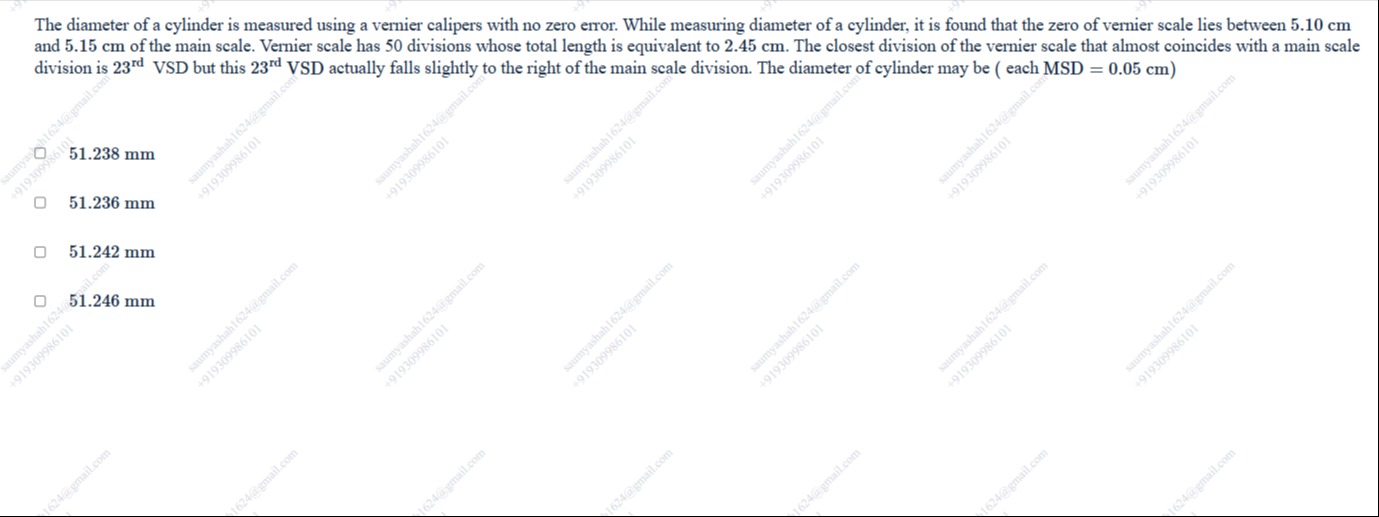Question
Question: The diameter of a cylinder is measured using a vernier calipers with no zero error. While measuring ...
The diameter of a cylinder is measured using a vernier calipers with no zero error. While measuring diameter of a cylinder, it is found that the zero of vernier scale lies between 5.10 cm and 5.15 cm of the main scale. Vernier scale has 50 divisions whose total length is equivalent to 2.45 cm. The closest division of the vernier scale that almost coincides with a main scale division is 23rd VSD but this 23rd VSD actually falls slightly to the right of the main scale division. The diameter of cylinder may be ( each MSD = 0.05 cm)

51.238 mm
51.236 mm
51.242 mm
51.246 mm
51.242 mm
Solution
The problem describes a measurement using vernier calipers. Here's a breakdown of the solution:
-
Identify Given Information:
- Main Scale Reading (MSR) lies between 5.10 cm and 5.15 cm, so MSR = 5.10 cm.
- 50 Vernier Scale Divisions (VSD) = 2.45 cm.
- 1 Main Scale Division (MSD) = 0.05 cm.
- The 23rd VSD is the closest to coinciding but falls slightly to the right.
-
Calculate Least Count (LC):
- Value of one VSD = 2.45 cm / 50 = 0.049 cm.
- LC = 1 MSD - 1 VSD = 0.05 cm - 0.049 cm = 0.001 cm.
-
Apply the Measurement Formula:
- Diameter = MSR + (VSR × LC)
- The statement about the 23rd VSD is crucial. It implies the true VSR is near 24.
-
Determine the Vernier Scale Reading (VSR):
- Since the 23rd VSD falls slightly to the right, we infer VSR is close to 24.
-
Calculate the Diameter:
- If VSR = 24, Diameter = 5.10 cm + (24 × 0.001 cm) = 5.124 cm = 51.24 mm.
-
Choose the closest option:
- The options are 51.238, 51.236, 51.242, 51.246 mm
- 51.242 mm is the closest to the calculated value.
